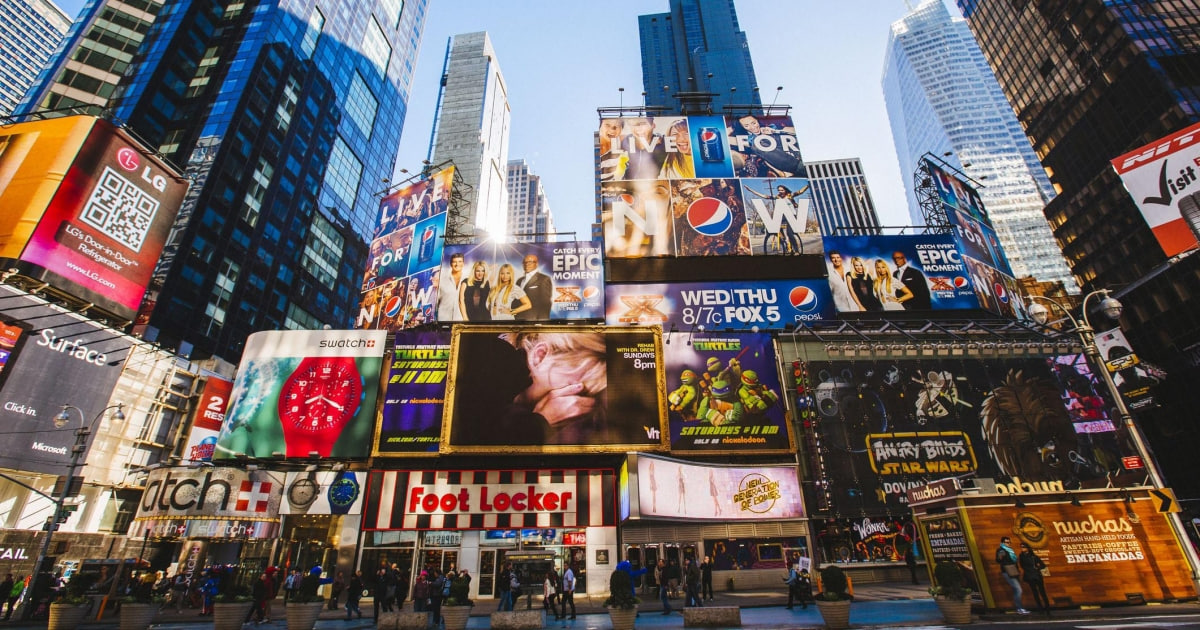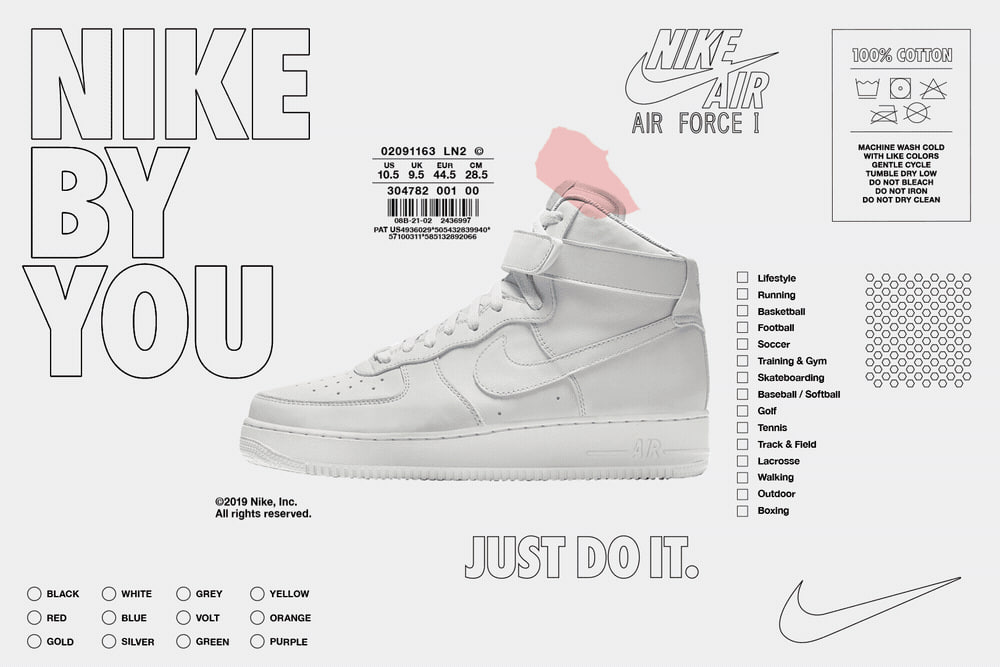Advertising in AI campaigns always lies on the fragile line between creativity, novelty and losing authenticity and humanity. From there, users will also have different reactions when receiving advertising campaigns. Is applying AI to advertising really effective and positive as many people think? And how can AI marketing receive positive responses from users?
Big companies are pouring millions of dollars into AI for marketing.
AI has been dominating all technology discussions over the past few years, and now it is increasingly proving its influence in Advertising conversations as well. According to statistics, businesses are expected to spend more than $40 billion on generative AI this year. In the Asia Pacific region alone, AI spending is expected to increase to $78.4 billion by 2027. Of that, a significant portion of the budget will be spent on marketing to introduce new products to the public.
Data from MediaRadar also shows that companies spent more than $107 million on advertising to market AI-related products and services in the first half of 2024, nearly 20 times the total $5.6 million spent in the same period last year. As of now, 575 companies have spent advertising to market AI products in 2024, up from 186 companies in all of 2023.
It can be seen that brands are not afraid to “open their wallets” for AI advertising. However, contrary to the huge investment figures and expectations of marketers, users receive AI advertising with many different reactions.

Consumer responses to AI ads vary
Consumers are concerned and “critical” about AI advertising
Advertisers love to talk about AI and use it as a tool for engagement, but they face a big problem: Users are skeptical about the technology and have a negative reaction to messages or ads that use or mention AI.
The 2024 Olympics could be a watershed moment for AI advertising. Google faced a wave of criticism when it promoted its AI tool Gemini through its “Dear Sydney” campaign. The heartwarming idea of the ad was based on a father’s efforts to help his daughter achieve her dreams. But Google’s mistake was in the way it built the story and integrated its Google Gemini product.
Instead of helping his daughter write a letter to her Olympic idol, the father used Gemini to do it. Writing letters is a way for people to express their thoughts and feelings in a deeply humane way. Replacing those human elements with AI has significantly reduced the connection and emotion. After this wave of criticism, Google had to remove this ad.
Previously, Apple – the global technology giant also had to publicly apologize after releasing an advertisement introducing the iPad Pro M4. Set to the music “All I ever need is you”, the 1-minute advertisement titled “Crush” recreates the scene of a hydraulic press crushing Creative tools such as musical instruments, game consoles, paints, sculptures, camera lenses, TVs… Finally, the press opens and reveals Apple’s latest tablet, the iPad Pro.
Instead of enthusiastically responding, users immediately reacted with indignation to this TVC by Apple. All they felt was that this technology giant would crush all that was beautiful and humane, leaving behind only a thin, lifeless metal device. At the same time, the ad also brought a sense of insecurity to creators in the AI era. Apple’s iPad Pro ad unintentionally became a representative of the anger and fear of the creative community towards the threat of AI.
Many brands believe that using AI in advertising will breathe new life into creativity. However, looking at how audiences react to AI’s “brainchildren”, we can see that not all products are well received.
From the stories of brands advertising AI, a big challenge is being posed to marketers: consumers do not fully trust AI and are rarely likely to buy AI-powered products. According to research at Washington State University, American consumers are less likely to buy products such as televisions, medical devices or financial services products if “Artificial Intelligence” is included in the product description. Or a Pew study in late November highlighted growing concerns about AI, in which 52% of Americans are more worried than excited about AI, up from 37% two years ago. It is not too difficult to understand why anxiety and insecurity about AI are increasing because artificial intelligence with superior capabilities is confronting and threatening human life and work.
Consumers are receptive to advertisements about AI being used as a support tool
“You can talk about AI, but don’t market it that way. It’s not a strategy, it’s a tool. We recommend they focus on: What’s the benefit in terms of the human experience?” said Josh Campo, CEO of advertising Agency Razorfish.
The AI-focused ads that are most effective with consumers are those that focus on stories where humans are leading AI to work for them.
When the AI-generated beauty images were shown, the ad created a wave of negative feedback. However, the feedback subsided when Dove showed examples of real beauty in the “By Code” campaign. In the TVC, Dove used an AI tool and entered keywords such as “a gorgeous woman” or “a perfect skin”, the results returned images of girls with unreal beauty, flawless skin. But when the keywords were entered again with the phrase “Dove Real Beauty Ad”, the tool returned many images showing the natural, real beauty of women.
While they may not be as perfect as AI models, they all exude a sense of authenticity and confidence. Marking 20 years of pursuing the message of “Real Beauty,” Dove has made a promise to “never use AI to distort the image of women.”
When brands use AI as a supporting tool rather than a key “human resource,” artificial intelligence becomes a powerful assistant that helps improve the user experience. Nike’s “By You” campaign is an excellent example of how AI can be used to personalize the customer experience.

Nike uses AI in “By You”
By allowing customers to design their own shoes, from color selection to design elements, Nike not only provides creative freedom but also makes customers feel deeply cared for. With “By You”, Nike can also indirectly collect and analyze data from customers’ preferences to adjust products to suit future tastes and trends.
Or in its Christmas campaign, Coca-Cola has fully exploited the power of AI to bring magic to Christmas. Accordingly, users can access CreateRealMagic.com to create digital Christmas greeting cards. Here, AI will help users realize their imagination images of Coca-Cola’s iconic characters.

AI Brings Christmas Miracle to Coca Cola
The activity created a bond between the brand’s rich heritage and a bright vision for the future and received an enthusiastic response from users. The presence of AI in advertising as a supporting tool has made AI campaigns approach users smoothly and effectively.
The way brands leverage AI as a supporting tool has helped increase the creativity and appeal of advertising, without taking away the “stage” of the product. The presence of artificial intelligence is just an additional element, not a key role. From there, viewers can easily accept it without having to worry about the fear of being replaced by AI or losing the humanity and emotion of the advertisement.
Conclusion:
With what AI is showing in the advertising market, it can be seen that users are still relatively “wary” of AI marketing campaigns. To catch up with the inevitable trend, brands cannot stay out of the race to apply artificial intelligence to their marketing activities. However, based on user reactions, each brand needs to be sober in choosing how to bring AI into advertising, what role AI will play and in what position so as not to affect the user experience and the brand’s product image.
Comment Policy: We truly value your comments and appreciate the time you take to share your thoughts and feedback with us.
Note: Comments that are identified as spam or purely promotional will be removed.
To enhance your commenting experience, consider creating a Gravatar account. By adding an avatar and using the same e-mail here, your comments will feature a unique and recognizable avatar, making it easier for other members to identify you.
Please use a valid e-mail address so you can receive notifications when your comments receive replies.
